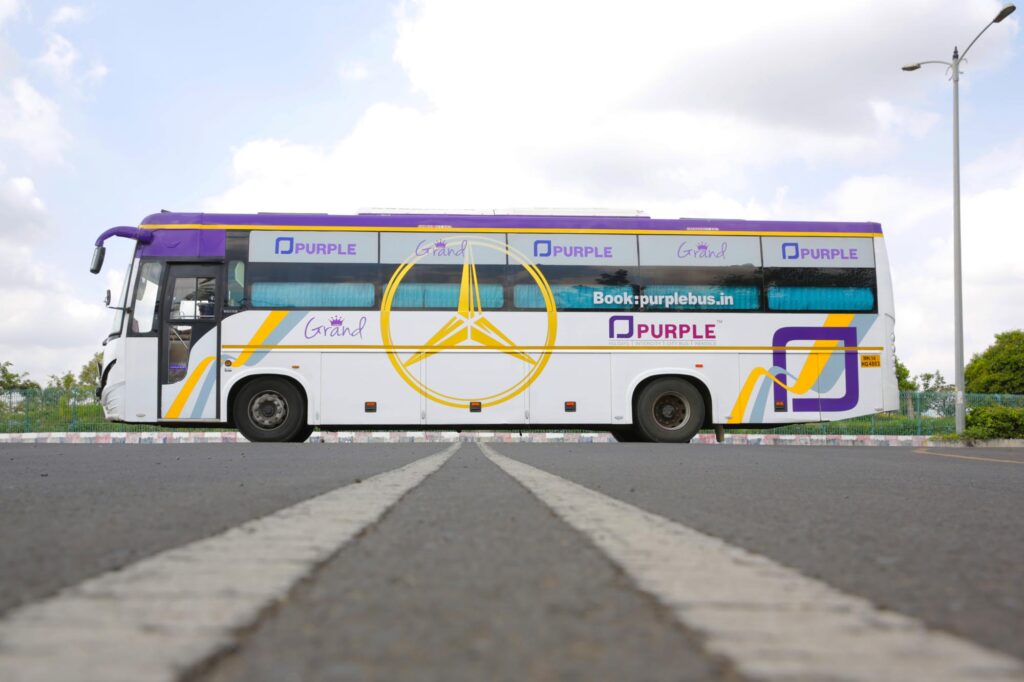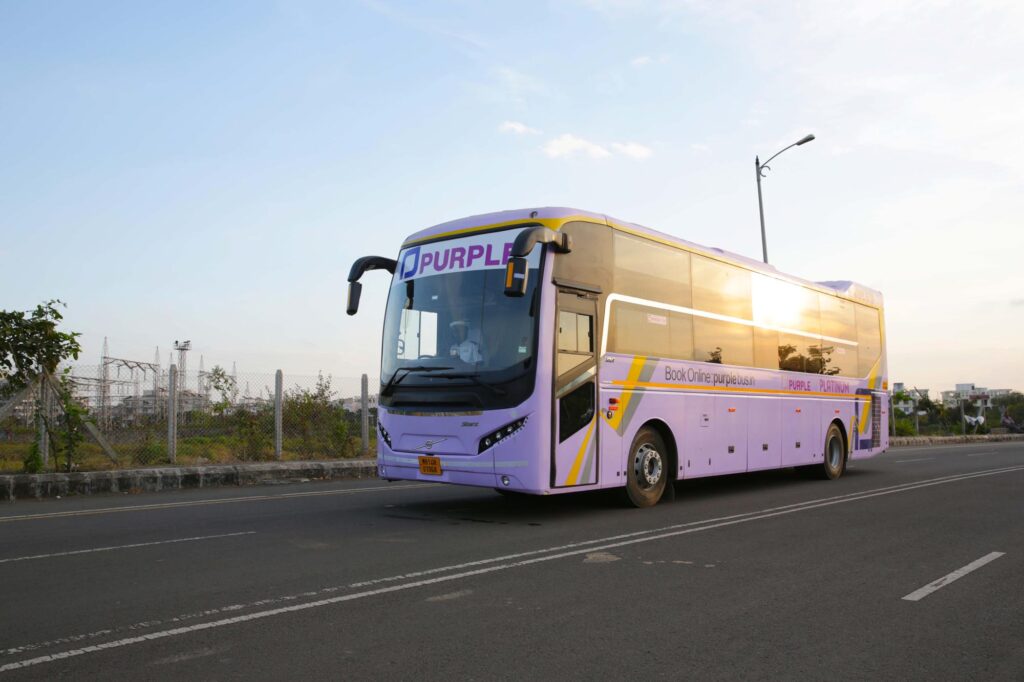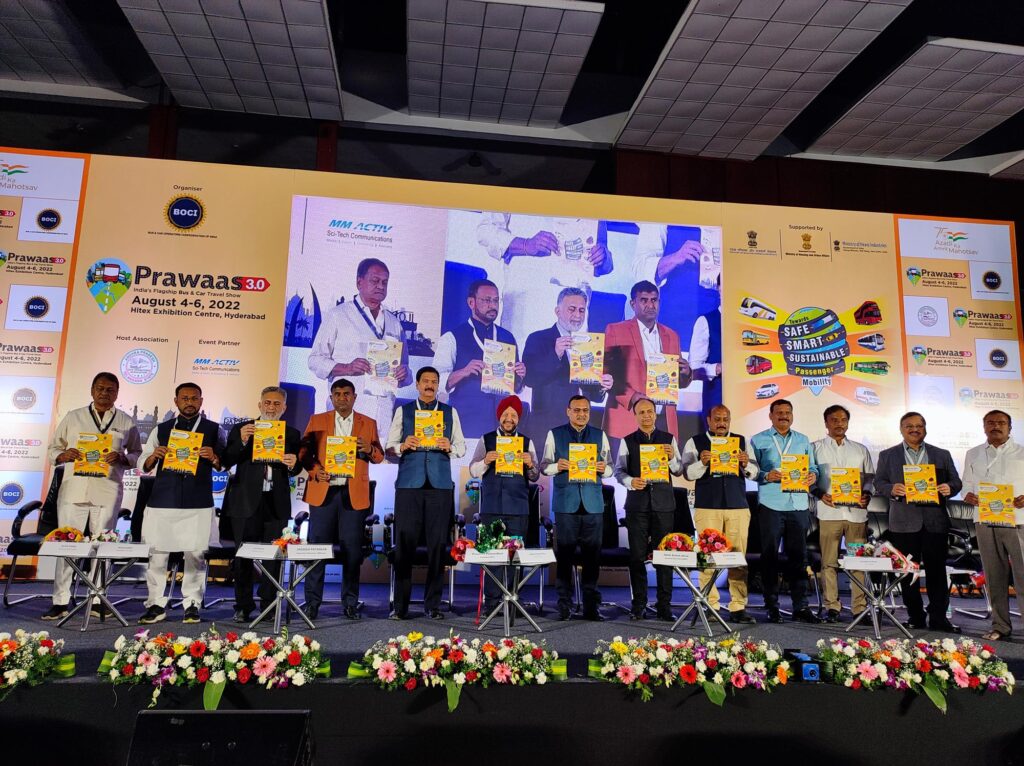A Candid Dialogue with Prasanna Patwardhan, President of BOCI and CMD of Prasanna Purple Mobility Solutions Ltd.
In an insightful and engaging conversation with Rajesh Rajgor, Prasanna Patwardhan, President of the Bus Operators Confederation of India (BOCI) and CMD of Prasanna Purple Mobility Solutions Ltd., offered a comprehensive perspective on the evolution and challenges of India’s public transport sector. With his wealth of experience and deep understanding, Patwardhan shed light on various aspects of the public transport industry, revealing both accomplishments and areas of focus for future enhancements.

BOCI’s Inception & Shaping Policy Shifts
Patwardhan sheds light on the inception of BOCI, stating that its formation was a response to the absence of a unified platform representing bus operators at the national level. “While local associations and state federations existed, there was a void in terms of a consistent voice for bus operators across the country. BOCI was established with a threefold objective: to bring together all stakeholders, including manufacturers, operators, and NGOs, to advocate for necessary changes in laws and regulations, and to bridge the communication gap between these stakeholders and the government,” he elaborated.
BOCI has achieved remarkable milestones, contributing significantly to the advancement of the passenger transport service in India. One of the most noteworthy achievements has been the introduction of Bus Body Codes, which has paved the way for innovative designs like double-decker, sleeper coaches, and articulated buses. A significant challenge faced by the bus industry was the seamless movement of buses across the nation. Patwardhan explains how BOCI played a crucial role in revamping the All-India Permit system, resulting in three major changes. “The process became digital, eliminating the need for physical visits to government offices. Uniform taxation at the central level streamlined financial processes, and the redefinition of stage carriage operation allowed the issuance of individual passenger tickets, providing more flexibility to operators.”
BOCI’s efforts have also led to instrumental changes in vehicle standards. Patwardhan highlights the extension of vehicle usage from eight to twelve years under the All-India permit and a recent development, involving the adoption of a 13.5-meter chassis. “While 13.5-meter two-axle vehicles exist worldwide, our country had been constrained to a 12-meter limit. As a result, achieving a 13.5-meter length required a shift to multi-axle vehicles with three axles. This alteration has led to a reduction in both vehicle expenses and operational costs,” he shared.
He further underscores BOCI’s collaboration with the Insurance Regulatory and Development Authority (IRDA) to introduce a separate category for school buses, resulting in lower insurance premiums due to their lower accident rates.

Nurturing Collaborations
Looking back to the inception of BOCI’s public-private partnership in 2006, Patwardhan fondly recalled the early days and how subsequent developments like the Jawaharlal Nehru National Urban Renewal Mission (JNNURM) prompted a paradigm shift. This mission marked a turning point, drawing government attention towards public transport, a sector that had previously remained off the radar. “BOCI played an instrumental role in drafting the standard concession agreement, a transformative document that ushered in a more balanced and mutually beneficial framework compared to previous agreements,” he disclosed.
Delving deeper into BOCI’s crucial role in advocating for and guiding public-private partnerships within the transport sector. The organization actively collaborates with government bodies, providing valuable insights on topics ranging from optimal concession agreements to financing models and essential infrastructure development. Patwardhan outlined pertinent issues, “Notably, recent consultations with NITI Aayog revolved around the promotion of electric buses in the private sector. The absence of subsidies for private buses, particularly those powered by electric propulsion is another issue. He elaborated on the pressing need for favorable financing terms and the creation of common charging infrastructure, asserting that these steps are pivotal for the adoption of electric buses.”
A notable highlight of Patwardhan’s discourse was BOCI’s strategic collaboration with the World Bank. Through this initiative, the organization aims to connect with small operators across India. This comprehensive engagement seeks to gather diverse perspectives and insights, ensuring that the challenges and aspirations of all stakeholders, irrespective of scale, are represented. “This inclusive approach aligns perfectly with BOCI’s overarching vision and underscores our commitment to creating an efficient, eco-friendly, and well-connected transportation network that benefits all,” he shared.

Advocating Integration for Efficient Mobility
Addressing a critical concern, Patwardhan emphasized the need for India to shift its focus from infrastructure-centric planning to holistic mobility solutions. He stressed the importance of integrated transport systems, encompassing not just roads and rails, but also pedestrian pathways, cycle tracks, well-designed bus stops, multimodal terminals, and interconnected stations. Patwardhan advocated, “A portion of the road budget should be allocated towards creating infrastructure that caters specifically to public transport needs, acknowledging the role of dedicated infrastructure in encouraging its use.”
Patwardhan made a compelling case for embracing an integrated approach to mobility, drawing attention to the preoccupation with metro projects. He emphasized, “While metros are undoubtedly valuable components of urban transit, a comprehensive mobility strategy should encompass various modes of transportation.” He cited the example of cities like London, where buses continue to play a significant role in catering to a large commuter base, underscoring the necessity for a balanced and inclusive transportation ecosystem.
He highlighted the need for comprehensive operator recognition, streamlined regulation, and facilitation. Patwardhan emphasized that for a successful shift to electric mobility, the government needs to focus on private operations. “Addressing infrastructure and financing challenges, along with the formulation of supportive regulations, are crucial steps towards creating an environment conducive to the widespread adoption of electric buses,” Patwardhan shared.
Empowering Mobility through the GCC Model
Patwardhan also delved into the concept of the Gross Cost Contract (GCC) model and its implications for the industry. He expressed his enthusiasm for this welcome development while offering a nuanced perspective on its implementation.

Patwardhan pointed out a significant hurdle within the GCC model—the challenging nature of the contracts being issued. He noted that many operators lack the capacity to enter into these contracts, leading to Original Equipment Manufacturers (OEMs) taking the lead. Patwardhan elaborated that this situation is a result of a fundamental flaw in the Motor Vehicle Act. “Under this act, operators are not recognized as such; instead, they are viewed merely as owners of buses.” Patwardhan traced the origins of this perspective to British rule, where an organized system for public and road transport was not prioritized, contrasting with the dominance of railways favoured by the British.
Addressing this, Patwardhan stressed the need for a well-structured system that acknowledges and empowers operators, thus enabling better regulation and facilitation. He highlighted, “Both single-bus operators and large fleet owners are perceived solely as vehicle owners, lacking proper oversight and support.”
Patwardhan then shifted his focus to the staggering number of buses in India. “With around 19 lakh vehicles (a figure that may not accurately represent the current count) in the country, the distribution and utilization of these vehicles is intriguing. Of this total, only about 1.5 lakh buses are operated by State Transport Undertakings (STUs). Public-Private Partnerships (PPPs) account for roughly 25,000 vehicles, while the majority of buses, approximately 10 lakhs, are utilized primarily for school and company contracts. The remaining buses serve diverse purposes, including stage carriage operations, private services, point-to-point travel, and more. This brings us to a striking realization: a substantial 92 to 93% of buses are owned by private entities,” he informed.
While the GCC model could partially address this distribution by replacing STU-operated vehicles, a comprehensive transformation necessitates a more profound focus on private operations. However, Patwardhan acknowledged that this transition comes with its own set of challenges. “Infrastructure, financing, and regulatory frameworks need to be aligned to support private operators effectively. Without addressing these critical factors, achieving the scale required for large-scale electric mobility adoption remains an uphill task,” he remarked.
BOCI’s Services & Vision for Prawaas
BOCI offers a range of specialized services to support the growth and development of its members. The organization conducts general body meetings focusing on safety, security, and service quality enhancement. “Health camps and training sessions in collaboration with member associations are provided at no cost, emphasizing the role of operators in improving service quality. Collaborative discussions with OEMs advocate for vehicle enhancements from time to time,” shared Patwardhan.
BOCI recognizes the three-way responsibility involving operators, OEMs, and government regulators to elevate public transport. By fostering knowledge sharing, facilitating meetings, and submitting policy recommendations, BOCI strives for innovation and continuous improvement in the sector.
Patwardhan envisions a transformative future for PRAWAAS, after 3 successful seasons, aiming for it to evolve into a robust B2B platform. “Manufacturers gain visibility and sales opportunities, while operators access high-quality products and insights into emerging technologies. The significance of government officials’ participation in influencing policy decisions and recognizing commendable contributions. We are looking ahead, with a commitment to safe, smart, and sustainable transport, fostering growth, knowledge exchange, and innovation. Efforts to attract international exhibitors and engage travel agencies promote tourism and global collaboration are also underway,” he revealed.
Prasanna Purple Mobility: Challenges & Progress:
In terms of its individual business trajectory, Prasanna Purple Mobility, under the leadership of Patwardhan, has experienced a blend of obstacles and advancements in the last three years. The preceding year marked a favorable reversal following two challenging years that were significantly shaped by the pandemic’s effects. “The pandemic-induced setback led to a slight reduction in the fleet size, but the focus is on rebuilding as the situation improves. We have also embraced technologies like GPS monitoring, electronic ticketing, and smart cards to enhance service reliability and performance. Additionally, electric mobility is a priority for us, with expansion plans and discussions with OEMs for self-owned electric buses,” stated Patwardhan. Their diverse verticals, including government contracts, intercity coaches, and school buses, is expected to drive positive growth. “While corporate mobility is affected by remote work trends, sectors like travel and tourism, intercity coaches, and school buses show resilience,” he disclosed.
India’s Public Transport Potential
In India, improving road networks and electric buses offer growth potential for the public transport industry. Additionally, Patwardhan advocates developing associated infrastructure, like rest areas, enhances safety and security for passengers. The future of the public transport industry looks promising, especially with the implementation of multimodal transportation and improved last-mile connectivity. This approach aims to encourage more youngsters to opt for public transport rather than personal vehicles, aligning with the changing dynamics of urban mobility.
“Innovative ideas like online ticketing platforms and GPS technologies are attracting more people to public transport already. Young entrepreneurs are also contributing to the sector’s evolution. Infrastructure improvements, technological advancements, and sustainable transportation options will further drive the industry’s bright prospects,” assured Patwardhan.
Overall, With BOCI at the forefront, the journey towards safe, smart, and sustainable integrated passenger mobility is well underway. In the words of Prasanna Patwardhan, “Our efforts are a testament to the transformation that can be achieved when all stakeholders come together with a shared vision. We are proud of what we have accomplished, and we remain committed to driving positive change in India’s bus industry,” concluded Patwardhan.